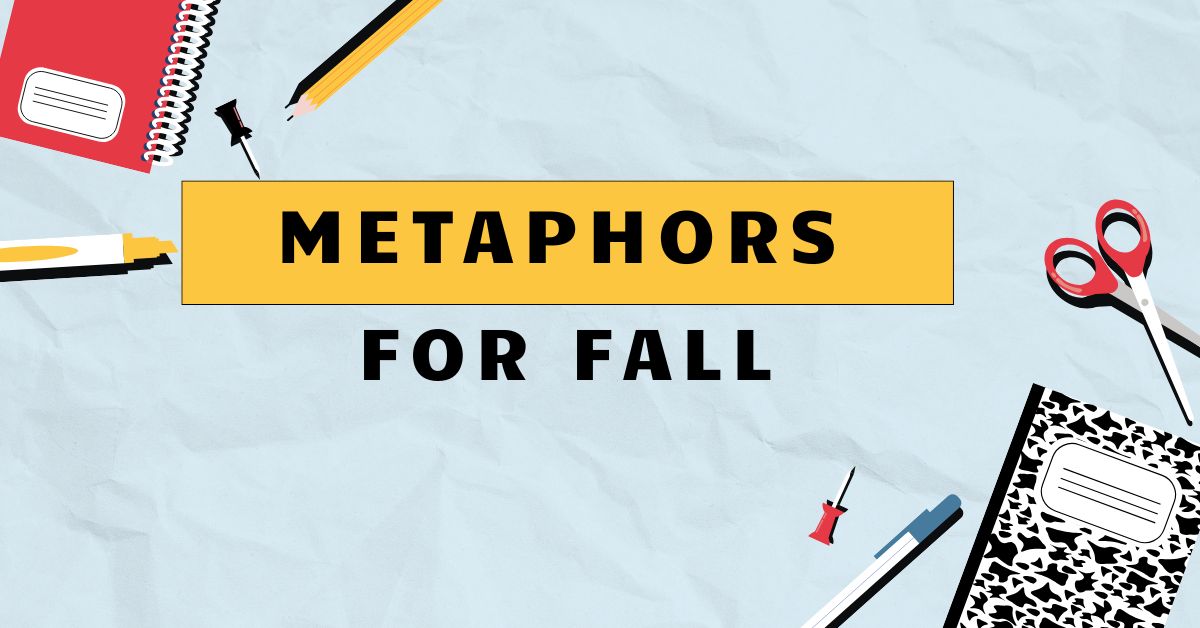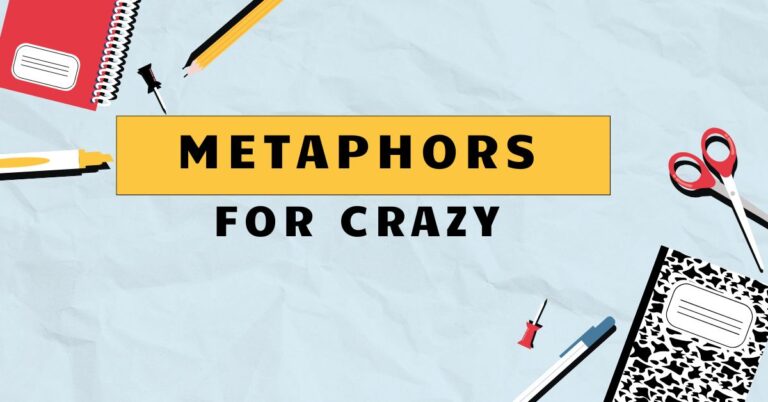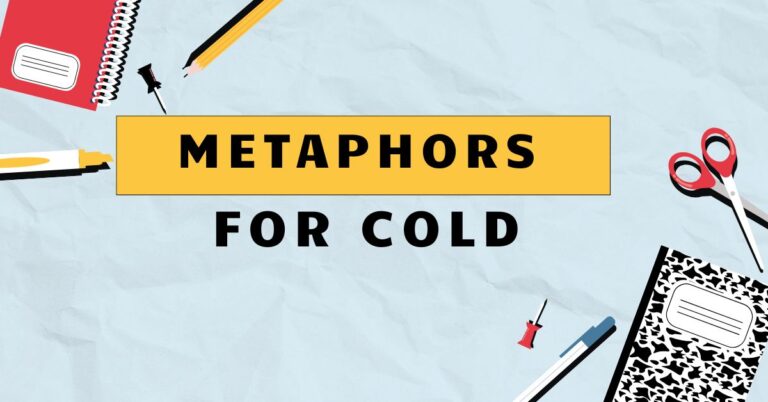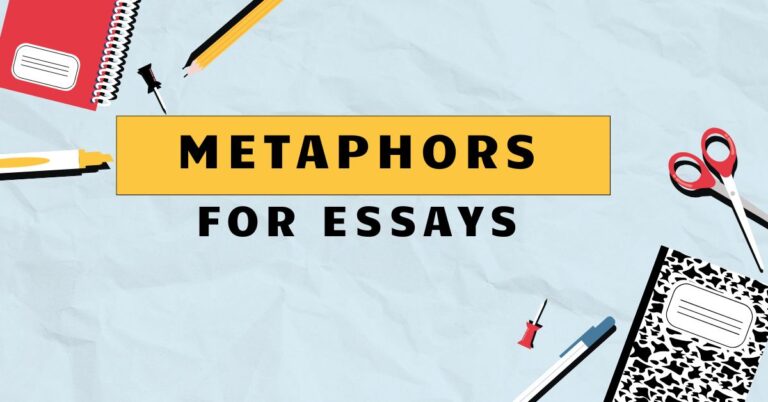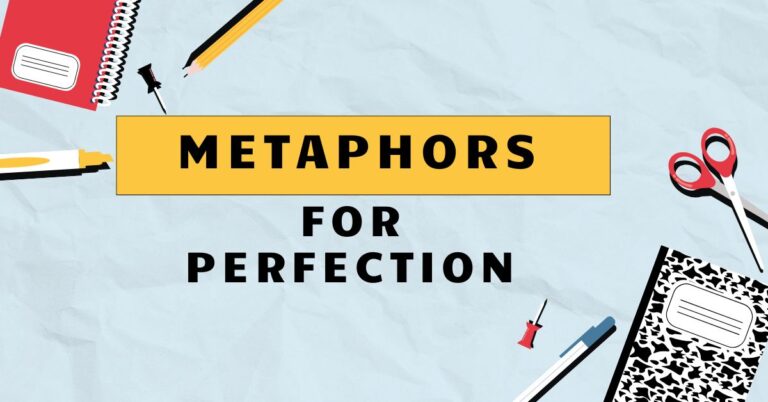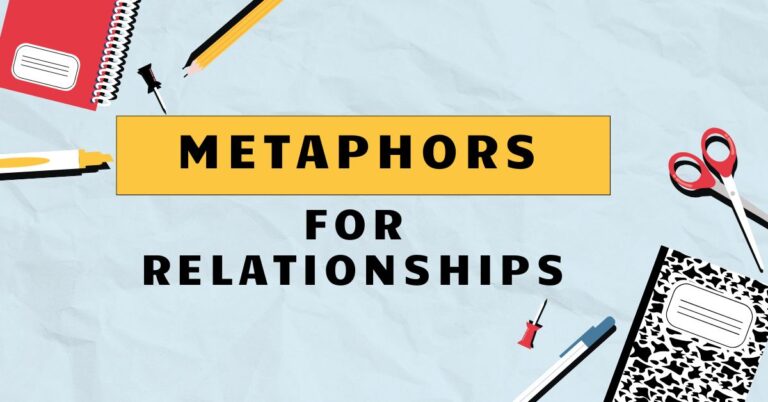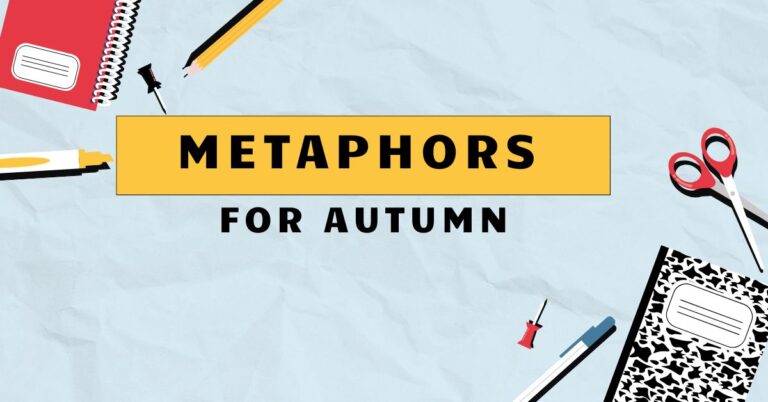47 Metaphors For Fall: A Comprehensive Grammar Guide
Understanding metaphors is essential for mastering figurative language and enriching your communication. This article delves into the use of metaphors specifically related to the season of fall, exploring how these figures of speech add depth, color, and emotional resonance to our language.
This guide is perfect for English language learners, educators, and anyone interested in enhancing their understanding and use of metaphors.
From basic definitions to advanced applications, this comprehensive guide will equip you with the knowledge and skills to identify, interpret, and effectively use metaphors for fall in both spoken and written English. Whether you’re a beginner or an advanced learner, this article offers valuable insights and practical exercises to improve your grasp of metaphorical language.
Table of Contents
- Definition of Metaphor
- Structural Breakdown of Fall Metaphors
- Types of Fall Metaphors
- Examples of Fall Metaphors
- Usage Rules for Fall Metaphors
- Common Mistakes with Fall Metaphors
- Practice Exercises
- Advanced Topics in Fall Metaphors
- Frequently Asked Questions
- Conclusion
Definition of Metaphor
A metaphor is a figure of speech that directly compares two unrelated things without using “like” or “as.” It asserts that one thing *is* another, creating a vivid and often surprising connection in the reader’s or listener’s mind. Metaphors are powerful tools for conveying complex ideas, evoking emotions, and adding richness to language.
Unlike similes, which use explicit comparison words, metaphors imply the comparison. This implicit comparison forces the audience to make the connection themselves, often leading to a deeper understanding and appreciation of the intended meaning.
Metaphors are ubiquitous in literature, poetry, everyday conversation, and various forms of creative expression.
In the context of fall, metaphors often draw parallels between the season’s characteristics – its colors, harvest, weather, and the process of transition and decay – and other aspects of life, emotions, or experiences. These metaphors leverage the inherent symbolism of fall to create more impactful and relatable expressions.
Structural Breakdown of Fall Metaphors
Understanding the structure of a metaphor involves recognizing the two key elements: thetenorand thevehicle. The tenor is the subject being described, and the vehicle is the object or concept to which the tenor is being compared.
In fall metaphors, the tenor is often an abstract concept (e.g., aging, change, loss), while the vehicle is a characteristic of fall (e.g., falling leaves, harvest, cold weather).
For example, in the metaphor “His life was an autumn sunset,” “his life” is the tenor, and “autumn sunset” is the vehicle. The metaphor suggests that his life, like an autumn sunset, is beautiful, vibrant, but approaching its end.
The effectiveness of a metaphor relies on the connection between the tenor and the vehicle being both relevant and evocative.
Effective fall metaphors also consider the context in which they are used. Understanding the cultural and emotional associations with fall can enhance the impact of the metaphor.
For instance, fall is often associated with nostalgia, reflection, and preparing for the future, which can inform the interpretation of metaphors related to the season.
Types of Fall Metaphors
Fall metaphors can be categorized based on the specific aspects of the season they emphasize. These categories include color metaphors, harvest metaphors, weather metaphors, transition metaphors, and decay metaphors.
Each category offers unique opportunities to create vivid and meaningful comparisons.
Color Metaphors
Color metaphors draw on the vibrant and distinctive colors of fall foliage. These metaphors often associate emotions, experiences, or qualities with specific fall colors, such as red, orange, yellow, and brown.
For example, “Her laughter was the gold of autumn leaves” compares the richness and beauty of her laughter to the color gold found in fall leaves.
Harvest Metaphors
Harvest metaphors focus on the idea of reaping what has been sown, both literally and figuratively. These metaphors often relate to achievement, reward, or the culmination of effort.
For instance, “He reaped a harvest of success” suggests that his hard work resulted in significant achievements, similar to gathering crops during the fall harvest.
Weather Metaphors
Weather metaphors utilize the changing weather patterns of fall, such as crisp air, falling rain, and approaching cold, to represent various emotions, situations, or transitions. “The chill of her words was like the first frost of autumn” compares the coldness of her words to the biting chill of early fall frost.
Transition Metaphors
Transition metaphors highlight the season of fall as a period of change and transformation. These metaphors often relate to personal growth, endings, or the passage of time.
“Life entered its autumn phase” suggests that the person has reached a later stage in their life, marked by reflection and preparation for what’s to come.
Decay Metaphors
Decay metaphors acknowledge the natural decline and decay that occur in fall. These metaphors can explore themes of mortality, loss, or the impermanence of beauty.
“Their relationship was a withered autumn leaf” compares the end of their relationship to a dried, decaying leaf, symbolizing its end and fragility.
Examples of Fall Metaphors
The following sections provide extensive examples of fall metaphors, categorized by type. Each example illustrates how the specific characteristics of fall can be used to create meaningful and evocative comparisons.
Color Metaphor Examples
Color metaphors use the vivid hues of autumn to paint a picture of emotions, experiences, or attributes. These metaphors often highlight the beauty and intensity of fall colors to enhance their impact.
Here’s a table with examples of color metaphors related to fall:
| Metaphor | Explanation |
|---|---|
| Her hair was the red of maple leaves in October. | Her hair’s color is compared to the vibrant red of maple leaves, suggesting a rich, fiery hue. |
| His smile was the golden yellow of a pumpkin patch. | His smile is described as warm and cheerful, like the sunny yellow of a pumpkin patch. |
| The sunset painted the sky with hues of burnt orange. | The sunset’s colors are likened to the deep, warm orange of a burning fire, creating a sense of drama and intensity. |
| Her dress was the brown of fallen oak leaves. | Her dress is described as a natural, earthy brown, reminiscent of the leaves that have fallen from oak trees. |
| The old book had pages the color of aged parchment. | The pages of the book have faded to a yellowed color, similar to old parchment paper, suggesting age and history. |
| His anger was the fiery red of autumn sumac. | His anger is intense and vibrant, like the striking red of sumac leaves in the fall. |
| The fields were a patchwork of gold and brown. | The fields are a mix of golden and brown colors, like a quilt, suggesting a rich agricultural landscape. |
| Her eyes were the amber of a fading autumn day. | Her eyes are described as a warm, golden-brown color, like the light of a fading autumn day, suggesting warmth and depth. |
| The town was draped in colors of rust and ochre. | The town’s color scheme resembles rust and ochre, evoking a sense of age and history. |
| The wine was the deep burgundy of late autumn grapes. | The wine’s color is a rich, dark red, like the color of grapes harvested late in the fall, suggesting a bold flavor. |
| His memories were tinted a sepia tone. | His memories are colored in a sepia tone, resembling old photographs, invoking nostalgia. |
| The fields were a tapestry of gold and brown. | The fields are a mix of golden and brown colors, like a quilt, suggesting a rich agricultural landscape. |
| Her voice was the warm, golden tone of honey. | Her voice is described as a warm, golden tone, like honey, suggesting sweetness and comfort. |
| The forest floor was covered in a mosaic of colors. | The forest floor is a mix of colors, like a mosaic, suggesting a rich and natural environment. |
| His skin had a bronze hue from the sun. | His skin is described as a warm, bronze color, suggesting exposure to the sun and a healthy glow. |
| Her laughter was the golden chime of bells. | Her laughter is described as a warm, golden tone, like the sound of bells, suggesting joy and happiness. |
| The hills were a canvas of reds and browns. | The hills are a mix of red and brown colors, like a painting, suggesting a rich and natural landscape. |
| Her words were coated in the rust of regret. | Her words are tinged with the color of rust, suggesting regret and decay. |
| His dreams were bathed in the golden light of dawn. | His dreams are bathed in the golden color of dawn, suggesting hope and new beginnings. |
| The painting captured the golden hour perfectly. | The painting captures the golden color of the hour before sunset, suggesting warmth and beauty. |
| Her love was the deep red of a ruby. | Her love is described as a rich, dark red color, like a ruby, suggesting passion and intensity. |
| The old house was painted a muted ochre. | The old house is painted a muted ochre color, suggesting age and history. |
| Her spirit was the bright orange of a marigold. | Her spirit is described as bright and cheerful, like the orange color of a marigold, suggesting joy and vitality. |
Harvest Metaphor Examples
Harvest metaphors emphasize the theme of reaping what you sow, connecting the act of gathering crops to the rewards and consequences of one’s actions. These metaphors often highlight the results of hard work and dedication.
Here’s a table with examples of harvest metaphors related to fall:
| Metaphor | Explanation |
|---|---|
| He reaped a harvest of gratitude from his students. | His efforts as a teacher resulted in his students expressing their gratitude. |
| She gathered the harvest of her years of research. | Her years of research culminated in a significant collection of findings. |
| They enjoyed the harvest of their collaborative efforts. | Their teamwork resulted in a successful outcome that they all benefited from. |
| He sowed seeds of kindness and reaped a harvest of friendship. | His acts of kindness resulted in him forming many strong friendships. |
| She inherited the harvest of her grandparents’ hard work. | She benefited from the legacy and accomplishments of her grandparents. |
| The company reaped a harvest of profits after the successful campaign. | The company’s marketing campaign resulted in a significant increase in profits. |
| He is now reaping the bitter harvest of his bad decisions. | He is now experiencing the negative consequences of his poor choices. |
| The artist collected the harvest of his creative endeavors. | The artist’s artistic efforts resulted in a significant collection of artwork. |
| The team is enjoying the harvest of their rigorous training. | The team’s hard work and training have resulted in a successful performance. |
| She gathered the harvest of her experiences and wrote a book. | She used her life experiences as the basis for writing a book. |
| He had a good harvest of ideas during the brainstorming session. | The brainstorming session produced many creative ideas. |
| They celebrated the harvest of their community garden. | They celebrated the abundance of vegetables and fruits grown in their community garden. |
| He invested wisely and reaped a rich harvest. | His wise investments resulted in significant financial gains. |
| She harvested praise for her outstanding performance. | She received a lot of praise for her excellent performance. |
| He is now facing the harvest of his neglect. | He is now experiencing the negative consequences of his negligence. |
| She reaped the rewards of her persistence and dedication. | Her persistence and dedication resulted in her achieving her goals. |
| The project yielded a harvest of useful data. | The project resulted in the collection of a significant amount of useful data. |
| He cultivated his skills and reaped a bountiful harvest. | He developed his skills and achieved significant success. |
| She enjoyed the harvest of her careful planning. | Her careful planning resulted in a smooth and successful outcome. |
| They divided the harvest of their joint venture. | They shared the profits and benefits from their joint business venture. |
| He received the harvest of his charitable donations. | His charitable donations resulted in positive recognition and goodwill. |
| She gathered the harvest of her lessons learned. | She collected and applied the knowledge and insights she gained from her experiences. |
| He is now contending with the harvest of his arrogance. | He is now facing the negative consequences of his arrogance. |
Weather Metaphor Examples
Weather metaphors use the characteristic weather patterns of fall to represent emotional states, situations, or transitions. These metaphors leverage the changing and often unpredictable nature of fall weather to add depth and complexity.
Here’s a table with examples of weather metaphors related to fall:
| Metaphor | Explanation |
|---|---|
| The chill in the air mirrored the chill in their relationship. | The cold weather reflects the emotional distance between them. |
| Her mood was as stormy as an autumn squall. | Her mood was turbulent and unpredictable, like a sudden fall storm. |
| His words were a gentle rain after a long drought. | His words were comforting and refreshing, like rain after a dry period. |
| The fog of uncertainty clouded their future. | Their future was unclear and obscure, like a foggy autumn morning. |
| Her anger was a hurricane, tearing through everything in its path. | Her anger was destructive and overwhelming, like a powerful hurricane. |
| The first frost of disappointment settled on their dreams. | Their dreams were negatively affected by a sudden disappointment. |
| His silence was as heavy as a leaden sky before a storm. | His silence was oppressive and foreboding, like the sky before a storm. |
| The warmth of her smile melted the ice in his heart. | Her smile was comforting and affectionate, dissolving his emotional coldness. |
| The news hit them like a cold front. | The news was shocking and unwelcome, like a sudden drop in temperature. |
| Their love was as constant as the autumn breeze. | Their love was steady and reliable, like the consistent wind of autumn. |
| His guidance was a beacon in the stormy weather of her life. | His guidance provided direction and safety during difficult times. |
| The project was shrouded in a mist of secrecy. | The project was concealed and mysterious, like a foggy landscape. |
| Her tears fell like the autumn rain, cleansing and renewing. | Her tears were cathartic and refreshing, like the cleansing rain of fall. |
| The economy faced a period of stormy weather. | The economy was experiencing a difficult and turbulent time. |
| His optimism was a ray of sunshine on a cloudy day. | His optimism provided hope and positivity during a gloomy period. |
| The truth emerged like the sun breaking through the clouds. | The truth became clear and visible after a period of obscurity. |
| Their friendship weathered many storms. | Their friendship endured through many difficult and challenging times. |
| His dreams were scattered like leaves in the wind. | His dreams were dispersed and unfulfilled, like leaves blown by the wind. |
| The city was bathed in the golden light of an autumn afternoon. | The city was illuminated by the warm, soft light of a fall afternoon. |
| Her determination was as strong as the wind. | Her determination was powerful and unwavering, like a strong wind. |
| The project was plagued by a storm of setbacks. | The project faced numerous challenges and difficulties. |
| His wisdom was a shelter from the storms of life. | His wisdom provided guidance and protection during difficult times. |
Transition Metaphor Examples
Transition metaphors highlight the season of fall as a time of change and transformation. These metaphors often relate to personal growth, endings, or the passage of time, emphasizing the theme of moving from one state to another.
Here’s a table with examples of transition metaphors related to fall:
| Metaphor | Explanation |
|---|---|
| His life entered its autumn years. | He is in the later stages of his life. |
| Their relationship was in the autumn of its lifespan. | Their relationship was nearing its end. |
| She was experiencing the autumn of her career. | She was approaching retirement. |
| The project was in its final autumn phase. | The project was nearing completion. |
| He felt the autumn chill of change. | He sensed the coming of significant changes in his life. |
| The old house was in the autumn of its existence. | The house was nearing the end of its life cycle. |
| The town was going through an autumn transformation. | The town was undergoing significant changes. |
| Her creativity was experiencing a vibrant autumn burst. | She was experiencing a surge of creative energy. |
| The business was in the autumn of its success. | The business was nearing the end of its period of prosperity. |
| He was entering the autumn of his youth. | He was transitioning from youth to middle age. |
| The company was preparing for its autumn restructuring. | The company was planning significant organizational changes. |
| She was experiencing the autumn of her dreams. | She was realizing her dreams in the later stages of her life. |
| The garden was undergoing its autumn pruning. | The garden was being prepared for the winter through pruning. |
| He was feeling the autumn melancholy of endings. | He was experiencing sadness related to the end of something significant. |
| The city was embracing its autumn festivities. | The city was celebrating the fall season with various events. |
| She was reflecting during the autumn of her life. | She was contemplating her life and experiences. |
| The relationship was experiencing its autumn decline. | The relationship was gradually deteriorating. |
| He was finding peace in the autumn of his years. | He was finding contentment and tranquility in his later life. |
| The project was facing its autumn challenges. | The project was encountering difficulties in its final stages. |
| She was celebrating the autumn of her achievements. | She was enjoying the recognition of her accomplishments. |
| The team was preparing for its autumn evaluation. | The team was getting ready for a performance review. |
| He was embracing the autumn changes in his life. | He was accepting and adapting to the changes happening in his life. |
| She was navigating the autumn of her career with grace. | She was managing the end of her career smoothly and elegantly. |
Decay Metaphor Examples
Decay metaphors acknowledge the natural decline and decay that occur in fall. These metaphors can explore themes of mortality, loss, or the impermanence of beauty, reflecting the end of a cycle or the fading of vitality.
Here’s a table with examples of decay metaphors related to fall:
| Metaphor | Explanation |
|---|---|
| Their love was a withered autumn leaf, fragile and dry. | Their love had become weak and lifeless. |
| His dreams lay decaying like fallen apples on the orchard floor. | His dreams had become ruined and unfulfilled. |
| The old house stood as a monument to decay. | The house was in a state of disrepair and ruin. |
| The city’s glory was fading like autumn leaves. | The city’s former splendor was diminishing. |
| Her memories were crumbling like old stone. | Her memories were fading and becoming fragmented. |
| His health was declining like the last days of autumn. | His health was deteriorating rapidly. |
| Their relationship was rotting from neglect. | Their relationship was suffering from a lack of care and attention. |
| The forest floor was a carpet of decaying leaves. | The ground was covered in rotting leaves. |
| The project was withering from lack of support. | The project was failing due to insufficient backing. |
| His spirit was decaying from bitterness. | His spirit was being destroyed by resentment. |
| The old book was falling apart, page by page. | The book was disintegrating due to age and wear. |
| Her hope was fading like the last light of autumn. | Her hope was diminishing as the season drew to a close. |
| The town’s economy was crumbling under pressure. | The town’s economy was collapsing due to various challenges. |
| His enthusiasm was withering away. | His enthusiasm was gradually disappearing. |
| The garden was succumbing to the decay of winter. | The garden was being destroyed by the harsh conditions of winter. |
| Her strength was diminishing with each passing day. | Her physical strength was gradually decreasing. |
| The fruit was rotting on the vine. | The fruit was decaying before it could be harvested. |
| His patience was wearing thin. | His patience was almost exhausted. |
| The old building was in a state of advanced decay. | The building was severely deteriorated and dilapidated. |
| Her dreams were turning to dust. | Her dreams were becoming unrealizable. |
| The project was falling into disrepair. | The project was deteriorating due to neglect. |
| His smile was a mask over the decay of his spirit. | His smile concealed his inner sadness and despair. |
| The old car was rusting away in the junkyard. | The car was gradually being destroyed by rust. |
Usage Rules for Fall Metaphors
Using fall metaphors effectively requires an understanding of certain usage rules. These rules ensure that the metaphors are clear, relevant, and impactful.
- Relevance: The connection between the tenor and the vehicle should be logical and easily understood.
- Context: Consider the context in which the metaphor is used. The cultural and emotional associations with fall should enhance the metaphor’s impact.
- Originality: While some common metaphors are effective, strive for originality to make your writing or speech more engaging.
- Clarity: Avoid metaphors that are too obscure or complex. The meaning should be readily apparent to the audience.
- Consistency: Ensure that the metaphor is consistent with the overall tone and style of the writing or speech.
Common Mistakes with Fall Metaphors
Several common mistakes can detract from the effectiveness of fall metaphors. Avoiding these errors will help ensure that your metaphors are clear and impactful.
| Incorrect | Correct | Explanation |
|---|---|---|
| The summer of his life was falling like leaves. | The autumn of his life was falling like leaves. | “Summer” does not align with the concept of falling leaves; “autumn” is more appropriate. |
| Her joy was as cold as a harvest. | Her joy was as warm as a harvest. | “Cold” is contradictory to the positive association of “joy”; “warm” is more fitting. |
| His anger was a gentle spring breeze. | His anger was a stormy autumn wind. | “Spring breeze” is too mild to convey anger; “stormy autumn wind” is a stronger metaphor. |
| The flower of his youth was ripe like spring. | The flower of his youth was fading like autumn. | “Ripe” aligns with growth, not the decline associated with youth; “fading” is more appropriate. |
| Their friendship was as green as the snow. | Their friendship was as strong as the oak in winter. | “Green as snow” is illogical; “strong as the oak” conveys resilience. |
Practice Exercises
Test your understanding of fall metaphors with the following exercises. Identify the type of metaphor used in each sentence, or create your own fall metaphor to complete the sentence.
Exercise 1: Identify the type of fall metaphor used in each sentence.
| Question | Answer |
|---|---|
| 1. His memories were tinted a sepia tone. | Color Metaphor |
| 2. She gathered the harvest of her experiences and wrote a book. | Harvest Metaphor |
| 3. The chill in the air mirrored the chill in their relationship. | Weather Metaphor |
| 4. His life entered its autumn years. | Transition Metaphor |
| 5. Their love was a withered autumn leaf, fragile and dry. | Decay Metaphor |
| 6. Her laughter was the gold of autumn leaves. | Color Metaphor |
| 7. He reaped a harvest of gratitude from his students. | Harvest Metaphor |
| 8. Her mood was as stormy as an autumn squall. | Weather Metaphor |
| 9. Their relationship was in the autumn of its lifespan. | Transition Metaphor |
| 10. His dreams lay decaying like fallen apples on the orchard floor. | Decay Metaphor |
Exercise 2: Complete the following sentences with an appropriate fall metaphor.
| Question | Answer |
|---|---|
| 1. Her voice was as warm as ______. | …the golden sun of a late autumn afternoon. |
| 2. The years had painted his face with the colors of ______. | …fading autumn leaves. |
| 3. He felt the ______ of his career approaching. | …autumn chill. |
| 4. Their friendship was like a ______ against the harsh winds of life. | …sheltering forest. |
| 5. Her dreams were as golden as ______. | …a field of ripe wheat. |
| 6. The news hit him like ______. | …the first frost of winter. |
| 7. Their love story was ______. | …an autumn sunset, beautiful and fleeting. |
| 8. The company was reaping ______. | …the harvest of its innovative ideas. |
| 9. His words were as comforting as ______. | …a warm fire on a chilly autumn evening. |
| 10. The project was decaying like ______. | …a forgotten pumpkin after Halloween. |
Advanced Topics in Fall Metaphors
For advanced learners, exploring the use of extended metaphors and allegories related to fall can provide a deeper understanding of metaphorical language. Anextended metaphoris a metaphor that is sustained over several lines or paragraphs, developing the comparison in greater detail.
Anallegoryis a story or narrative in which the characters and events represent abstract ideas or moral qualities.
Analyzing literary works that utilize fall as a central metaphor or allegory can offer valuable insights into the power and complexity of metaphorical language. For example, consider how authors use the symbolism of fall to explore themes of aging, mortality, or societal decline.
Examining these advanced applications can enhance your ability to create and interpret sophisticated metaphors.
Frequently Asked Questions
Here are some frequently asked questions about fall metaphors, addressing common concerns and providing further clarification.
- What is the difference between a metaphor and a simile?
A metaphor directly compares two unrelated things without using “like” or “as,” while a simile uses “like” or “as” to make the comparison explicit. For example, “His heart was a stone” is a metaphor, while “His heart was like a stone” is a simile.
- How can I create original fall metaphors?
To create original metaphors, focus on specific and unique aspects of fall, such as the scent of decaying leaves or the sound of rustling foliage. Consider how these sensory details can be connected to abstract concepts or emotions.
- Why are metaphors important in English language learning?
Metaphors are important because they enhance understanding, add depth to language, and improve communication skills. They help learners grasp abstract concepts and cultural nuances.
- Can metaphors be misinterpreted?
Yes, metaphors can be misinterpreted if the connection between the tenor and the vehicle is unclear or if the audience lacks the necessary cultural context. Clarity and relevance are crucial for effective communication.
- What role does context play in understanding
metaphors?
Context is essential for understanding metaphors because it provides the necessary background information and cultural associations that inform the interpretation. Understanding the context helps the audience grasp the intended meaning and appreciate the metaphor’s impact.
Conclusion
Mastering fall metaphors can significantly enhance your ability to express complex ideas and evoke emotions in both writing and speech. By understanding the types of fall metaphors, following usage rules, and avoiding common mistakes, you can effectively leverage the rich symbolism of the season to create vivid and meaningful comparisons.
Whether you’re an English language learner or a seasoned writer, the insights and exercises in this guide will empower you to use fall metaphors with confidence and creativity.

